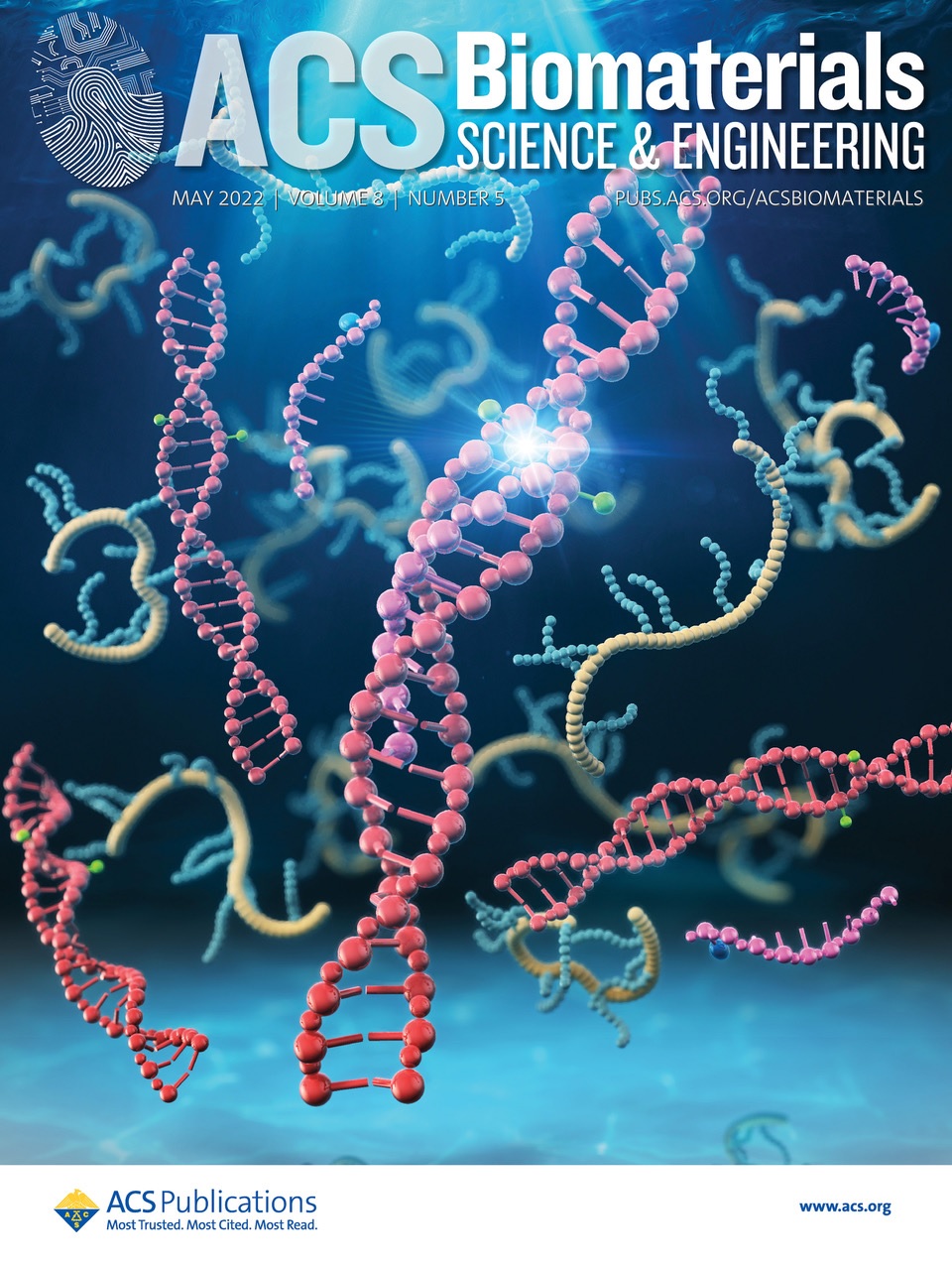Anxiety in couples undergoing IVF: evidence from E-Freeze randomised controlled trial
IF 5.4
2区 医学
Q2 MATERIALS SCIENCE, BIOMATERIALS
引用次数: 0
Abstract
What are the risk factors and impacts of anxiety in women and men in heterosexual couples undergoing IVF as part of a randomised trial, with a delay in embryo transfer in one arm? Duration of infertility, ethnicity and male partner’s anxiety levels were associated with women’s anxiety at the start of treatment, while initial anxiety score, partner’s anxiety score at embryo transfer, ethnicity and clinic location were associated with women’s anxiety levels at embryo transfer; although women undergoing IVF were more anxious than their partners for slightly different reasons, their self-reported state anxiety was not associated with achieving clinical pregnancy, or with switching from delayed frozen embryo transfer to fresh embryo transfer in an IVF trial. Use of IVF treatment continues to rise and patients undergoing IVF are anxious. Participating in a randomised controlled trial (RCT) with uncertainty of arm randomisation might increase their anxiety, while a delay in treatment may add further to anxiety. A mixed methods study was conducted using data from the multi-centre E-Freeze RCT cohort conducted across 13 clinics in the UK from 2016 to 2019. A regression analysis on anxiety scores of couples undergoing the IVF trial and a qualitative analysis of participant questionnaires were performed. Six hundred and four couples participating in the E-Freeze trial, who had at least one useable State-Trait Anxiety Inventory (STAI) State Anxiety subscale (STAI-S) standardised self-report questionnaire for at least one of the partners, were included in the study. STAI-S scores were measured at consent for trial (T1) and again at embryo transfer (T2). Linear and log binomial regression were used to explore the association between characteristics and STAI-S scores, and the associations between STAI-S scores and non-compliance and clinical pregnancy, respectively. Responses to the open text question were qualitatively analysed inductively using content analysis. Women’s STAI-S scores at T1 (consent) were associated with their ethnicity, duration of infertility and their male partner’s STAI-S score at T1. Women’s STAI-S scores at T2 (embryo transfer) were associated with their ethnicity, location of fertility clinic, their STAI-S score at consent, and their male partner’s STAI-S score at embryo transfer. The adjusted coefficient (95%CI) for women’s STAI-S scores at T2 was -4.75 (-7.29, -2.20, p < 0.001) for ethnic minority versus White, -2.87 (-4.85, -0.89, p = 0.005) for Scotland versus England, 0.47 (0.37, 0.56, p < 0.001) for each point increase in their own score at T1, and 0.30 (0.21, 0.40, p < 0.001) for each point increase in their male partner’s score at T2. On average, women had higher STAI-S scores than men at both time points, and a larger increase of scores between the two time points. However, women’s STAI-S scores were not associated with either non-compliance with trial allocation in the ‘freeze-all’ trial arm, or with chances of pregnancy. Both partners, but particularly women, described feeling anxious about the outcome of IVF, with women carrying the added worry of believing that feeling stressed might itself affect the outcome. Participants highlighted the important role of support from staff in helping them to manage their anxiety. Data were not available on education level or social support, which might influence anxiety scores. Men’s baseline characteristics were not collected. Identifying couples at increased risk of emotional distress may be improved by using standardised anxiety measures at the start of the fertility treatment. Women can be reassured that their self-reported state anxiety does not affect their chances of achieving clinical pregnancy through IVF, and this may help to reduce anxiety levels. The psychological wellbeing and experiences of couples undergoing IVF could be supported by patient-centred care: making information about the whole process of treatment and choices available to both partners in accessible formats; ensuring interactions with staff are kind and supportive; and acknowledging and addressing the different concerns of women undergoing IVF and their partners. This study was an NIHR HTA (National Institute for Health and Care Research Health Technology Assessment) funded study. There are no conflicts of interest to declare. ISRCTN registry: ISRCTN61225414试管婴儿夫妇的焦虑:E-Freeze 随机对照试验的证据
作为随机试验的一部分,在接受试管婴儿治疗的异性夫妇中,其中一方推迟了胚胎移植,那么女性和男性焦虑的风险因素和影响是什么? 不孕症持续时间、种族和男性伴侣的焦虑程度与女性在治疗开始时的焦虑程度有关,而初始焦虑评分、伴侣在胚胎移植时的焦虑评分、种族和诊所地点与女性在胚胎移植时的焦虑程度有关;虽然接受试管婴儿治疗的女性比其伴侣更焦虑,原因略有不同,但她们自我报告的焦虑状态与临床妊娠的实现无关,也与试管婴儿试验中从延迟冷冻胚胎移植转为新鲜胚胎移植无关。 体外受精治疗的使用率持续上升,接受体外受精的患者也很焦虑。参加随机对照试验(RCT),而随机臂的不确定性可能会增加他们的焦虑,而治疗的延迟可能会进一步加重焦虑。 我们利用2016年至2019年期间在英国13家诊所开展的多中心E-Freeze RCT队列数据进行了一项混合方法研究。对接受试管婴儿试验的夫妇的焦虑评分进行了回归分析,并对参与者的问卷进行了定性分析。 参与E-Freeze试验的六百零四对夫妇被纳入了研究,他们至少有一方拥有一份可用的状态-特质焦虑量表(STAI)状态焦虑分量表(STAI-S)标准化自我报告问卷。在同意试验(T1)和胚胎移植(T2)时分别测量了 STAI-S 分数。线性回归和对数二项式回归分别用于探讨特征与 STAI-S 评分之间的关系,以及 STAI-S 评分与不依从性和临床妊娠之间的关系。采用内容分析法对开放文本问题的回答进行了定性分析。 女性在T1(同意)时的STAI-S得分与她们的种族、不孕持续时间及其男性伴侣在T1时的STAI-S得分有关。妇女在 T2(胚胎移植)时的 STAI-S 得分与其种族、生育诊所地点、同意时的 STAI-S 得分及其男性伴侣在胚胎移植时的 STAI-S 得分有关。T2时女性STAI-S评分的调整系数(95%CI)为:少数民族相对于白人为-4.75 (-7.29, -2.20, p < 0.001);苏格兰相对于英格兰为-2.87 (-4.85, -0.89, p = 0.005);苏格兰相对于英格兰为0.在 T1 阶段,她们自己的得分每增加 1 分,女性的得分就会增加 47 (0.37, 0.56, p < 0.001);在 T2 阶段,她们男性伴侣的得分每增加 1 分,女性的得分就会增加 0.30 (0.21, 0.40, p < 0.001)。平均而言,女性在两个时间点的 STAI-S 得分均高于男性,并且在两个时间点之间的得分增幅更大。然而,女性的 STAI-S 分数与不遵守 "全部冻结 "试验组的试验分配无关,也与怀孕几率无关。伴侣双方,尤其是女性,都对试管婴儿的结果感到焦虑,而女性更担心压力本身会影响试管婴儿的结果。参与者强调了工作人员的支持在帮助她们控制焦虑方面所起的重要作用。 有关教育水平或社会支持的数据不详,而这可能会影响焦虑评分。没有收集男性的基线特征。 通过在开始生育治疗时使用标准化的焦虑测量方法,可以更好地识别情绪困扰风险较高的夫妇。可以向妇女保证,她们自我报告的焦虑状态不会影响她们通过试管婴儿获得临床妊娠的机会,这可能有助于降低焦虑水平。以患者为中心的医疗服务可帮助接受试管婴儿治疗的夫妇获得心理健康和体验:以无障碍的形式向夫妇双方提供有关整个治疗过程和选择的信息;确保与工作人员的互动是善意和支持性的;承认并解决接受试管婴儿治疗的妇女及其伴侣的不同关切。 本研究是一项由 NIHR HTA(国家健康与护理研究所健康技术评估)资助的研究。无利益冲突声明。 ISRCTN 注册:ISRCTN61225414
本文章由计算机程序翻译,如有差异,请以英文原文为准。
求助全文
约1分钟内获得全文
求助全文
来源期刊

ACS Biomaterials Science & Engineering
Materials Science-Biomaterials
CiteScore
10.30
自引率
3.40%
发文量
413
期刊介绍:
ACS Biomaterials Science & Engineering is the leading journal in the field of biomaterials, serving as an international forum for publishing cutting-edge research and innovative ideas on a broad range of topics:
Applications and Health – implantable tissues and devices, prosthesis, health risks, toxicology
Bio-interactions and Bio-compatibility – material-biology interactions, chemical/morphological/structural communication, mechanobiology, signaling and biological responses, immuno-engineering, calcification, coatings, corrosion and degradation of biomaterials and devices, biophysical regulation of cell functions
Characterization, Synthesis, and Modification – new biomaterials, bioinspired and biomimetic approaches to biomaterials, exploiting structural hierarchy and architectural control, combinatorial strategies for biomaterials discovery, genetic biomaterials design, synthetic biology, new composite systems, bionics, polymer synthesis
Controlled Release and Delivery Systems – biomaterial-based drug and gene delivery, bio-responsive delivery of regulatory molecules, pharmaceutical engineering
Healthcare Advances – clinical translation, regulatory issues, patient safety, emerging trends
Imaging and Diagnostics – imaging agents and probes, theranostics, biosensors, monitoring
Manufacturing and Technology – 3D printing, inks, organ-on-a-chip, bioreactor/perfusion systems, microdevices, BioMEMS, optics and electronics interfaces with biomaterials, systems integration
Modeling and Informatics Tools – scaling methods to guide biomaterial design, predictive algorithms for structure-function, biomechanics, integrating bioinformatics with biomaterials discovery, metabolomics in the context of biomaterials
Tissue Engineering and Regenerative Medicine – basic and applied studies, cell therapies, scaffolds, vascularization, bioartificial organs, transplantation and functionality, cellular agriculture
 求助内容:
求助内容: 应助结果提醒方式:
应助结果提醒方式:


